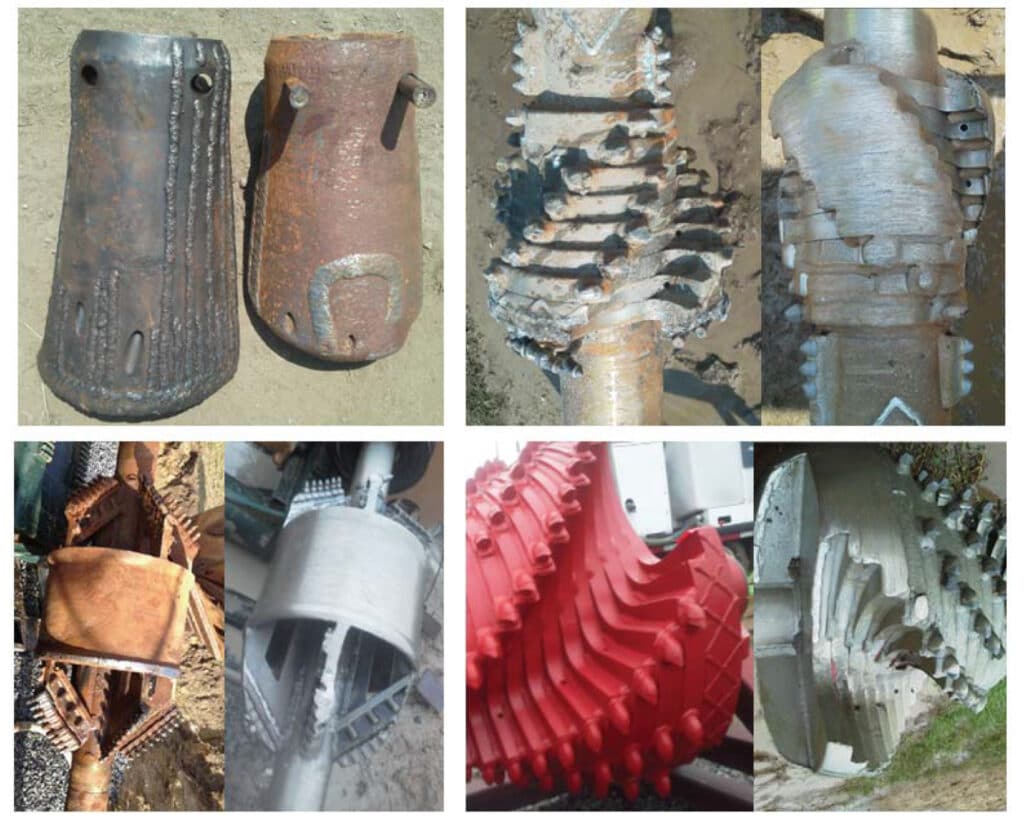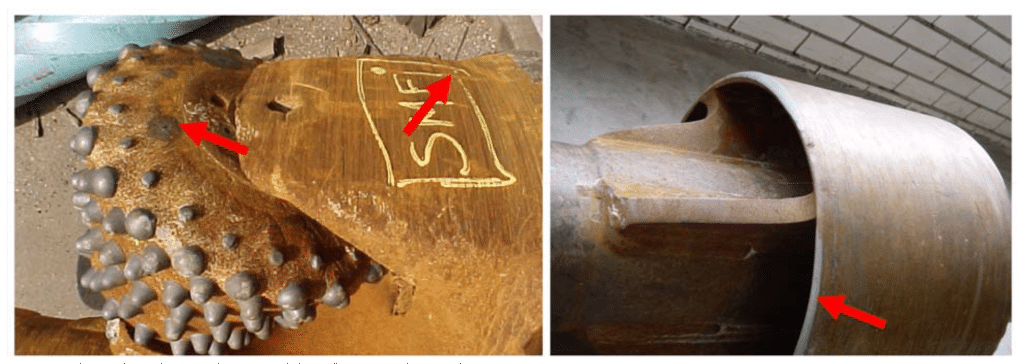*The paper this article was based on was presented at No-Dig 2019 and won the Outstanding Paper of the Year from NASTT*
By Nick H. Strater, P.G., Brian C. Dorwart, P.G., P.E., and Jim Williams, P.E.
Successful trenchless horizontal directional drilling (HDD) installations require thorough and accurate subsurface investigation and characterization for the development of the drill geometry, to estimate the project cost and schedule, and for selection of drilling tools. An unexpected risk associated with HDD may be excessive tool wear from abrasive soil and bedrock materials. This is a leading cause of cost and schedule overruns associated with HDD projects.
Understanding the factors that cause abrasion and identifying their presence through a geotechnical characterization is necessary to avoid unforeseen costs and schedule delays. The abrasive potential for soil will be controlled by the amount of hard and tough minerals present. Mineral hardness may be considered using Moh’s scale (relative to common drill tool components), while toughness considers a material’s resistance to fracture. Additional factors impacting soil abrasion will be grain size, relative density/consistency, and moisture content. Abrasive potential in bedrock is similarly controlled by mineral hardness and toughness, and impacted by grain (crystal) size, compressive strength, and weathering.
We use a variety, and often a combination, of methods to evaluate material abrasivity during subsurface characterization for HDD projects. Some of the traditional ways to evaluate soil abrasivity include mineralogical composition identification by hand sample and petrographic examination, following impregnation with a bonding agent. Although less common (and more expensive) X-ray diffraction and scanning electron microprobing may also be used. Two other soil testing options are Soil Abrasion Test (SAT™), and the Penn State Soil Abrasion Index (PSAI). Currently, neither test method is well established. For bedrock, the most common means of evaluating abrasive potential is a combination of hand sample evaluation, petrographic analysis and Cerchar testing.

Using the results of soil and rock testing along with other subsurface data, three types of abrasion potential should be evaluated for each project: Primary abrasion which occurs through rotation and movement of the drill tool against the face and sidewall of the bore. Secondary abrasion is associated with the degradation of steel housing or body of the drill tool. Tertiary abrasion is caused by suspended soil and rock particles in the bentonite-based drilling fluid which can impact the pump impellor blades and other fluid transport mechanics. To mitigate this from occurring, the drill fluid recycling system needs to efficiently remove these particles so that mud motor components and jet assemblies are not unduly damaged.
HDD design elements can be modified to reduce adverse impacts. These may include avoiding compound curves and tight borepath curve radii, which can increase the rate of tool wear. The designer should consider whether subsurface zones of suspected or confirmed abrasive zones within the proposed drill path can be avoided altogether.
The rate of tool advance must be carefully balanced with the drill fluid pumping rate to ensure that abrasive materials are efficiently removed from the face and transported away from the drill tool. Requesting that the contractor reduce or minimize pumping rate to reduce annular pressures (and frac-out risk) is common. However, this may result in additional tool wear, requiring more frequent trips to replace or condition tools, and more time downhole, which may ultimately increase frac-out risk.

During design or during tooling selection by HDD contractors, equipment manufacturers are a good resource and should be able to provide recommendations with regard to appropriate rotation rate, weight on tool, appropriate reamer steps, and pump rate to help reduce tool wear potential.
A successful HDD installation begins with the subsurface characterization. Having a Trenchless Specialist on your team who understands the effects of geological conditions and characteristics and knows how to develop solutions to design and construction challenges will deliver a successful project.
This article was also featured in Texas & Oklahoma Trenchless Report 2020.